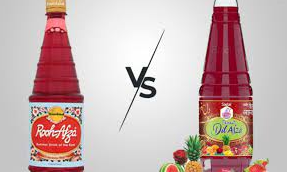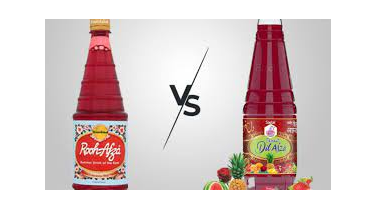Rooh v. Dil: A Battle Of Emotion?
Introduction:
The concept of comparing and considering a trademark in its entirety is a well-established tenet in trademark law. When a trademark is registered, it provides protection to the mark as a whole, even if it is a composite trademark with numerous aspects in it. The Delhi High Court recently took the opposite position in the matter of Hamdard National Foundation & Anr. vs. Sadar Laboratories (2022), which will be discussed in this blog.
Factual Background
Hamdard National Foundation (India) is the first plaintiff, while Hamdard Dawa khana, also known as Hamdard Laboratories (India), is the second plaintiff. Hamdard Dawa khana is a firm held in trust that was previously known as Hamdard Dawa khana. For almost a century, the Plaintiffs have been making and marketing Unani and Ayurvedic medicines, oils, syrups, and non-alcoholic beverages, among other things. Since 1949, the defendant corporation has been in the business of producing Unani medicines, syrups, and botanical items. Plaintiffs saw an advertising for Defendants’ syrup/sharbat, which had the mark ‘DilAfza’ on it and was packaged in deceptively similar ringlet bottles to the ‘RoohAfza’ bottle.As a result, the plaintiffs filed this claim on the basis of infringement, together with an application for an ad-interim injunction under Order XXXIX Rules 1 and 2 read with Section 151 CPC.
Issues Raised:
The following were the main issues presented in the current lawsuit:
-
-
- Whether using the defendant’s trademark for similar items would result in infringement of the plaintiff’s products or generate public misunderstanding as to the source of the product.
- Whether or not the Hon’ble Court has the authority to issue directions under Section 124(5) of the Trade Marks Act, 1999.Contentions of Parties
-

Analysis
In light of the observations of the Lahore High Court in Unani Dawakhana v. Hamdard, 1930 SCC OnLineLah 300, where the Lahore High Court found that the trademark ‘Roof Afza’ was a well-known mark, thus fitting the definition of a ‘well-known trademark’ under Section 2(1)(zg) of the Trade Marks Act, 1999, the Court rightly refused to accept the defendant’s counsel’s contention that the plaintiffs’ mark and the defendant’s mark were both registered marks, according to the High Court.
“A validly registered trademark gives the registered proprietor the exclusive right to use that trademark, except that where two people are registered proprietors of trademarks that are identical or nearly identical to each other, their exclusive right to use any of those trademarks cannot be enforced against each other under Section 28 of the Trade Marks Act, 1999.”
There can’t be any confusion about the usage of the words ‘Dil’ and ‘Rooh,’ according to the Court, because they don’t mean the same thing. Even if the buyers were connoisseurs, it would be a stretch to suppose that the usage of the words ‘Rooh’ and ‘Dil’ would generate misunderstanding because they connote intense emotion. It stated:
“Buying a bottle of sharbat may elicit emotions, but not to the depths hoped for by the plaintiffs’ skilled counsel. Those who understand this deep passion, in any event, would be the first to recognize the difference between ‘Rooh’ and ‘Dil.’”
The Bench further cited this Court’s decision in Cadila Laboratories Ltd. v. Dabur India Ltd., 1997 SCC OnLine Del 360, in which the Court held that:
“According to the decisions laid down by the various Courts, the importance of the prefix of the word should be taken due weightage and important in the case where the suffix is common. Where the suffix of the word is common, regard must be had to the earlier portion of the word which distinguishes one from the other. Where the suffix is common, the earlier portion of the word is the natural, necessary and, in fact, the actual mark of distinction. As has been settled, while ascertaining two rival marks, as to whether they are deceptively similar or not, it is not permissible to dissect the words of the two marks. It is also held that the meticulous comparison of words, letter by letter and syllable by syllable, is not necessary and phonetic or visual similarity of the marks must be considered..”
Similarly, in Vardhman Buildtech Pvt. Ltd. v. Vardhman Properties Ltd., 2016 SCC OnLine Del 4738, the court referred to Section 15(1) of the Trade Marks Act, 1999, which allowed a trademark proprietor to claim exclusive use of any part of a trademark separately, but noted that the respondents had not made such an application. In this case, the situation is exactly the same. The plaintiffs make no mention of applying for and receiving registration for the exclusive use of the term ‘Afza.’As a result, it is evident that the plaintiffs can claim exclusivity only for the full name ‘RoohAfza,’ not for each of the two words that make up the trademark.
Plaintiffs, in this case, do not claim to have applied for and received registration for the exclusive use of the term ‘Afza.’ As a result, it was evident that the plaintiffs could only claim exclusivity for the full name ‘RoohAfza,’ not for each of the two words that make up the trademark. While the whole word ‘RoohAfza’ may have acquired a secondary meaning indicative of sharbat generated by the plaintiffs, the word ‘Afza’ by itself does not appear to be in that category, according to the Court.
Furthermore, on the question of whether the defendants can be barred from using or marketing “DilAfza,” the Hon’ble court accepted the defendants’ argument that there has been “peaceful co-existence with no confusion in the minds of the consumers” regarding the terms used in the pharmaceutical industry, as the defendants have been using “DilAfza” for unani medicines since at least 1976. “Even if the sharbat has only been developed since 2020,” the Court concluded, “no cause has been made out to stop the defendant from promoting its sharbat under the name ‘DilAfza.'”
Judgment
Accepting that the marks in question were identical “would be taking an extreme position,” the court concluded. It claimed that the words “Rooh” and “Dil” have different meanings, but that the word “Afza” is common to both, therefore there will be no mistake about the meanings of these two words. Plaintiffs do not allege that they applied for and received registration for the exclusive use of the word ‘Afza,’ thus Plaintiffs can only claim exclusivity for the whole name ‘RoohAfza,’ not for each of the two components that make up the trademark.The court determined that “RoohAfza” as a whole acquires a secondary meaning, indicating Plaintiffs’ sharbat, but not “Afza.” Finally, the court stated that Defendant had been operating under Class 5 in a peaceful manner since 1976, with no consumer confusion. The Hon’ble Bench stated that no temporary injunction will be granted against Sadar, but that they must produce their accounts and quarterly reports for record purposes until the complaint is resolved. As a result, the plea was dismissed.
Concluding Remarks:
In cases of trademark infringement, Indian courts have consistently stated that the marks in question must be assessed in their entirety, not in part. However, in this case, the Delhi High Court applied an unusual interpretation to the resemblance between two rival trademarks, stating that the plaintiffs can claim exclusivity only for the whole name ‘RoohAfza,’ not for either of the two components that make up the trademark. However, in the actual world, whether people typically identify the marks with a brand as a whole and whether consumers’ feelings are truly not deep despite a product being so well-known is a matter to be considered. Nonetheless, the court appears to have upheld a quite different aspect of Trademark Law, namely, that mere coexistence of trademarks is not a legitimate justification for excluding the possibility of confusion, which has set a distinct precedent for future comparable cases.
Author: Anuja Saraswat an intern at IP And Legal Filings, in case of any queries please contact/write back us at support@ipandlegalfilings.com.



